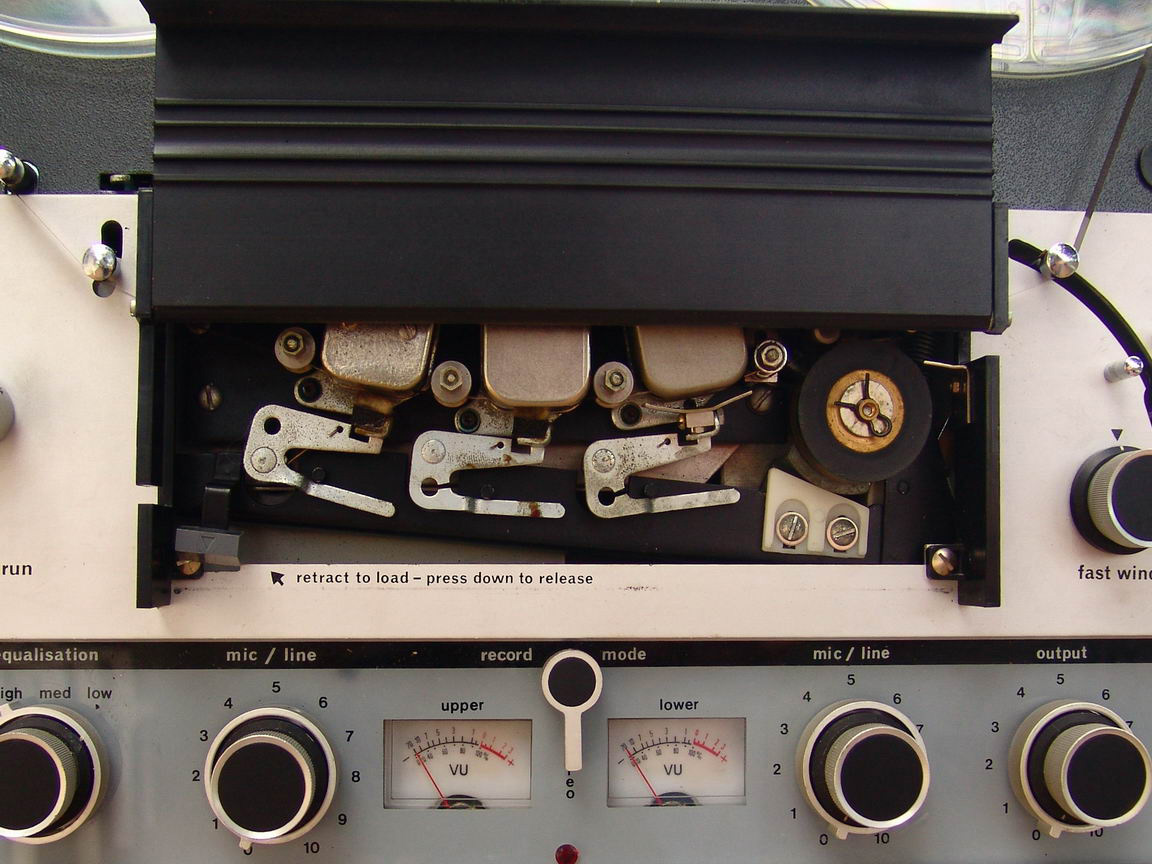Technical Details
Brand: Ferrograph
Model:Seven
Category:Mid High Fidelity
Application:Consumer
Electronics:Solid State
Equalization:NAB
Country of Manufacture:United Kingdom
Release dates:1968 - 1974
Original Price: $182
Tracks:1/2 Rec/PB
Speeds: 3 3/4, 7 1/2, 15
Max Reel Size("): 8"
Number of heads: 3
Dimension: 16¾ . x 17½ x 10)" (425 x 445 x 254mm)
Head Composition: Permalloy
Head Configuration: Stereo
# Motors: 3
Auto Reverse?:No
Voltage(s): 110-120v
Outputs: RCA
Frequency Response:15 ips: 25Hz - 20 kHz (2 dB) 7½ ips: 20Hz - 20 kHz 3¾ ips: 30Kz - 15 khZ
Wow and Flutter:0.06% at 15 ips. 0.12% at 7½ ips. 0.15% at 3¾ ips
Signal-to-Noise Ratio:57 dB at 15 ips. 56 dB at 7½ ips. 5 dB at 3¾ ips
Sound quality rating:6 / 10
Long-term reliability rating: 7/ 10
Weight: 49½ lbs (22.5 kg)
Additional Details
Description
First released in late 1968, this recorder was sold in many variants well into 1974, with the D (Dolby) variant introduced in 1972. This version has the honour of being the first reel to reel recorder to incorporate the Dolby B noise reduction system but it was this series, the series seven that was to mark the beginning of the end for Ferrograph.
The late 1960s saw the introduction of more competition from the Continent and Japan. Akai, Teac, Sony and Revox spring to mind, their recorders having the advantage of up-to-date styling and features. Vertical operation became the buzz word. Ferrograph entered this new era by developing the Series 7, which on paper seemed to address all the shortcomings of earlier machines. Vertical operation, variable bias & rewind were just some of these, and of course the new models were all solid state devices.
But the reputation built up over 20 years was badly dented by the problems which beset this new addition. Reliability issues became a problem for the company for the first time in its history. Excessive head wear Was noticeable fairly immediately with customers returning their decks after three months. They also had faults with the auto-stop switch, and most importantly, the fact that the machine, far from being a brand new mechanical design, had been cobbled together in about six months in a desperate attempt to get it on the market on time.
Of course, Ferrograph quickly addressed all the reliability problems, but not before they had paid the cost.
All that being said, after all these years, the seven when restored is a very good sounding machine and often the pinch roller should be rebuilt and capacitor replacements are recommended as well.
By 1972 they had re-worked the Series 7, added Dolby B noise reduction and dubbed it “mk II”.
Additional Info
Year 1968 – 1974
Price when new (in the UK) £182
Heads Three
Motors Three
Maximum reel size 8¼ ;” (21mm)
Tape speeds 15, 7½ , & 3¾ ips (high speed model); 7½ , 3¾ , 1 ips (std model)
Frequency response ( 2dB)
15 ips: 25Hz – 20 kHz (2 dB)
7½ ips: 20Hz – 20 kHz
3¾ ips: 30Kz – 15 khZ
Speed tolerance 1%
Wow & flutter 0.06% at 15 ips; 0.12% at 7½ ips; 0.15% at 3¾ ips
Signal to noise ratio 57 dB at 15 ips; 56 dB at 7½ ips; 5 dB at 3¾ ips
Crosstalk (‘0’ VU 1kHz) 47 dB at all speeds
Harmonic distortion 2% at all speeds, 1kHz at ‘0’ VU
Fast wind speed Continuously variable in both directions, less than 1 min. for 1200ft
Amplifier output 10 watts RMS per channel
Amplifier distortion 0.25% up to 10 watts RMS
Inputs
microphone: 30µV – 15mV at 10 Kohms
line: 50mV – 10V at 10 Kohms
Outputs
600 ohm line: 2V at 600 ohm
low level: 300mV into 10 Kohm or greater
external speaker: up to 10 watts R.M.S. into 8 – 16 ohms
Speaker(s) two elliptical 7″ x 4″ (18 cm x 10 cm)
Dimensions 16¾ ; x 17½ x 10)” (425 x 445 x 254mm)
Weight 49½ lbs (22.5 kg)



